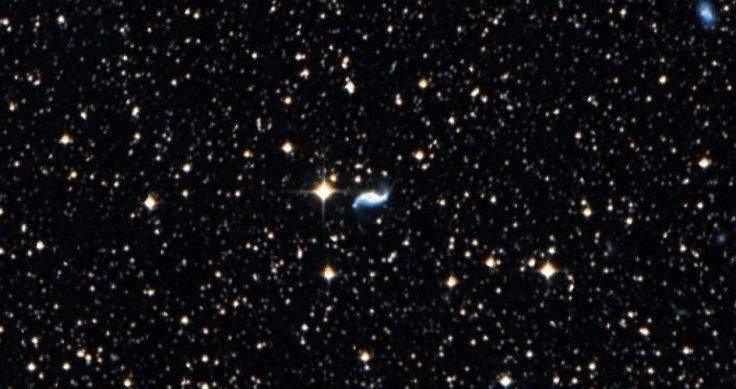New Theory Disproves Dark Energy And Acceleration Of Universe Expansion

The universe is widely perceived as a constantly expanding and has been since the big bang. This is a phenomenon that has been baffling astrophysicists for years. Several attempts have been made to provide a logical explanation that covers all bases about how the universe behaves and what space is really made up of.
A paper published in the journal Monthly Notices of the Royal Astronomical Society by a group at the University of Canterbury in Christchurch, New Zealand,has tried to do just that. The team has found that a universe without dark energy — which is essential to prove that the expansion is an acceleration process — better explains the Ia (pronounced one-a) Supernova theory.
Dark energy is the mysterious void in space science. It's existence merely bridges a gaps in our theory about what space is actually made up of, how it expands, and how the rate of this expansion is accelerating. It sustains current models of how the universe was formed and what it is made of.
Dark energy is a theoretical energy that acts opposite to gravity and facilitates the acceleration of the expansion of the universe. It holds the exact values of all the holes in this theory. Meaning, it was created having the exact values to fill the gaps. It is like a balancing the steps in a wrong math problem to make it seem right. It is an assumption.
It constitutes 75 percent of the universe, and it might just cease to exist. If that puts things into perspective about the universe and it's symmetry, god knows what will.
Scientists say the universe is expanding based on the changes in perceived distance and the measured distance of supernova explosions in distant galaxies. The change in distance over time pointed to one thing only, expanding universe pushing the object away.
The previous two models that tried to explain this were both based on the simplified 100-year-old cosmic expansion law — Friedmann's equation. There were the standard Lambda Cold Dark Matter cosmology model and the other model which claimed that the universe was empty with the expansion neither accelerating or decelerating. Both were based on this same equation.
This Friedmann's equation assumes that the new space created during the expansion is just empty, and theoretically, ideal. There are complicated interactions between galaxies. Friedmann's equation does not take into account this delicate cosmic balance that needs to be maintained to balance the intricacies of the primordial ‘soup.’
Prof David Wiltshire, who led the study from the University of Canterbury in Christchurch said: "The past debate missed an essential point; if dark energy does not exist then a likely alternative is that the average expansion law does not follow Friedmann's equation."
This presupposing of one particular answer has held back alternate ways of looking at the expansion of the universe.
In the newly proposed model is called 'timescape cosmology'. There is no dark energy here to fill the gaps.
This is because the dark energy is needed to explain to this model only if certain factors are taken into consideration. These factors are known as clocks. They are basically methods or angles of studying the expansion of the universe.
Each model has a clock to explain the time line and the rate of expansion of the universe. The clocks determine from what perspective you view the universe and at what rate the universe is expanding from where you are standing.
What this means is, whether this uniform acceleration happens or not depends on which clock you use.
So in this model, the clocks differ at different points of observation. In environments where matter density is found slightly different from volume averages, the clocks will differ.
So, what factors you take into account to explain the expansion differ at different points in the universe. Whether or not one infers accelerating expansion then rests critically on the clock used.
This model includes perspective and position of observation into account and states that the expansion may not the uniformly accelerated process for every observer.
The timescape cosmology model was found to fit the data available from the largest supernova data catalog better than the existing lambda CDM model, said the study. This is the only way to test the model.
The data available is not comprehensive enough to fuel any proof that this is the right way to study expansion. The European Space Agency's Euclid satellite, scientists in the study say, will have the power to distinguish between the standard cosmology and other models that have been proposed, and help scientists to decide whether dark energy is real or not.
What this theory does is challenge existing models with ideas that carry weight.Only when such challenges are made, are breakthroughs created. We could be on the cusp of major breakthroughs in the biggest question we have faced. The creationist dilemma deserves a conclusion.
© Copyright IBTimes 2025. All rights reserved.



















